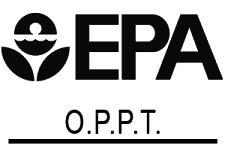ASDWA Submits Comments on TSCA 1,4-Dioxane Supplemental Risk Evaluation
 On December 10, ASDWA submitted comments on the EPA Toxic Substances Control Act (TSCA) “1,4-Dioxane; Supplemental Analysis to the Draft TSCA Risk Evaluation.” ASDWA previously provided comments on several TSCA Significant New Use Rules (SNURs) and these comments reiterate that EPA should use a holistic approach for TSCA actions to consider potential impacts to drinking water, human health, and the environment from chemicals (in this case, 1,4-dioxane) throughout any part or all the chemical’s lifecycle – from manufacturing through processing, distribution, and disposal. ASDWA also asked for an extension of this 20-day comment period on November 25th but it was not granted. These comments highlight how 1,4-Dioxane has negatively impacted both groundwater and surface water sources of drinking water in some states from multiple pathways, including specific examples from the states of New Hampshire and North Carolina.
On December 10, ASDWA submitted comments on the EPA Toxic Substances Control Act (TSCA) “1,4-Dioxane; Supplemental Analysis to the Draft TSCA Risk Evaluation.” ASDWA previously provided comments on several TSCA Significant New Use Rules (SNURs) and these comments reiterate that EPA should use a holistic approach for TSCA actions to consider potential impacts to drinking water, human health, and the environment from chemicals (in this case, 1,4-dioxane) throughout any part or all the chemical’s lifecycle – from manufacturing through processing, distribution, and disposal. ASDWA also asked for an extension of this 20-day comment period on November 25th but it was not granted. These comments highlight how 1,4-Dioxane has negatively impacted both groundwater and surface water sources of drinking water in some states from multiple pathways, including specific examples from the states of New Hampshire and North Carolina.
ASDWA’s comments focus on expanding this risk evaluation to add exposures from 1,4-dioxane in drinking water because there is no Safe Drinking Water Act (SDWA) regulatory standard (or Maximum Contaminant Level [MCL]) for 1,4-dioxane… and the SDWA does not adequately assess and effectively manage these exposures.” In addition, ASDWA recommends that EPA following the same reasoning that it did for adding exposures from ambient water to this risk evaluation – because there is no nationally recommended Ambient Water Quality Criteria under the Clean Water Act (CWA) – to add and assess ALL potential exposures and not assume that any other EPA-administered statutes or regulatory programs (including the SDWA) will provide viable or economically feasible options to eliminate and/or reduce risks from 1,4-dioxane. For drinking water, ASDWA also requests that “EPA explain why the Office of Water is relying on the TSCA risk evaluation to make a drinking water regulatory determination for 1,4-dioxane, when the Office of Chemical Safety and Pollution Prevention is excluding drinking water exposure from its analysis.” Read ASDWA’s comments here.

